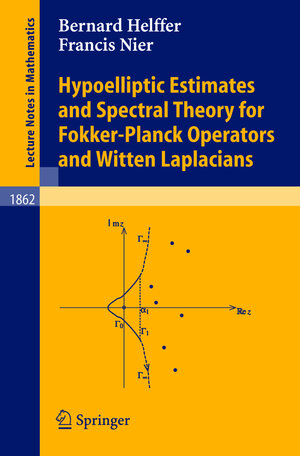
From the reviews of the first edition:
„The aim of this text is to give an account of how the known techniques from partial differential equations and spectral theory can be applied for the analysis of Fokker-Plank operators or Witten Laplacians … . This synthetic text is very challenging and useful for researchers in partial differential equations, probability theory and mathematical physics.“ (Viorel Iftimie, Zentralblatt MATH, Vol. 1072, 2005)
Hypoelliptic Estimates and Spectral Theory for Fokker-Planck Operators and Witten Laplacians
von Francis Nier und Bernard HelfferThere has recently been a renewal of interest in Fokker-Planck operators, motivated by problems in statistical physics, in kinetic equations, and differential geometry. Compared to more standard problems in the spectral theory of partial differential operators, those operators are not self-adjoint and only hypoelliptic. The aim of the analysis is to give, as generally as possible, an accurate qualitative and quantitative description of the exponential return to the thermodynamical equilibrium. While exploring and improving recent results in this direction, this volume proposes a review of known techniques on: the hypoellipticity of polynomial of vector fields and its global counterpart, the global Weyl-Hörmander pseudo-differential calculus, the spectral theory of non-self-adjoint operators, the semi-classical analysis of Schrödinger-type operators, the Witten complexes, and the Morse inequalities.



